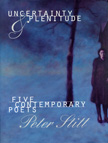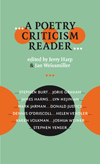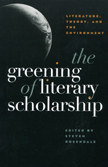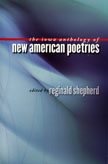Uncertainty and Plenitude
“Peter Stitt writes with a warm familiarity of poetry that he admires, and he is also willing to make distinctions in the work of poets he on the whole admires and by his negatives give us some chance to determine the justice of his general judgments.”—Donald Hall
“The warmth Stitt demonstrates, for the work of these poets, and for his readers, creates a pleasant atmosphere rarely found in critical texts. Yet Stitt's insights and assessments of the work of these poets do not suffer as a result. Critical texts such as this one help soothe the anxiety of living in the age of muchness and allow us to feel a sense of camaraderie as we work with and against the 'inescapable hegemony of uncertainty,' over the poet and critic alike.”—Pleiades
“Peter Stitt's approach in his latest critical study is not theoretical in the New Historicist or deconstructionist sense of the word. Instead his method of close reading provides for a thorough assessment of each poet's formal and thematic concerns. Conceptually sound and splendidly written, Uncertainty and Plenitude marks a vital contribution to the criticism of contemporary American poetry.”—Sewanee Review
From the extraordinary diversity of contemporary poetry, Peter Stitt, the distinguished critic and editor of the Gettysburg Review, has chosen in this book to write about five poets only, all premier practitioners—John Ashbery, Stephen Dobyns, Charles Simic, Gerald Stern, and Charles Wright, with a special look at Stanley Kunitz in relation to Wright. Stitt's confident and inventive assessments of these fine poets' work help us gain some focus on the “uncertainty and plenitude” of the current poetry scene, demonstrating that concentrated and knowledgeable criticism can show us ways to begin measuring the accomplishments of our poetic age.
Stitt's interest in these five poets is intellectual and aesthetic. As he states, “I chose these particular writers because their work continues to interest me deeply, both intellectually and formally, even after years of familiarity.” He uses his understanding of the philosophical implications inherent in modern physics, as they apply to both content and form, as the basis for his close analysis.
Stitt attends to the poets' writerly strategies so that we may discover in their poetry where “surface form” intersects and complements meaning and thus becomes, in John Berryman's terms, “deep form.” He explains what these poets say and how they say it and what relationships lie between. He also shows how humor plays a part in some of their work.






